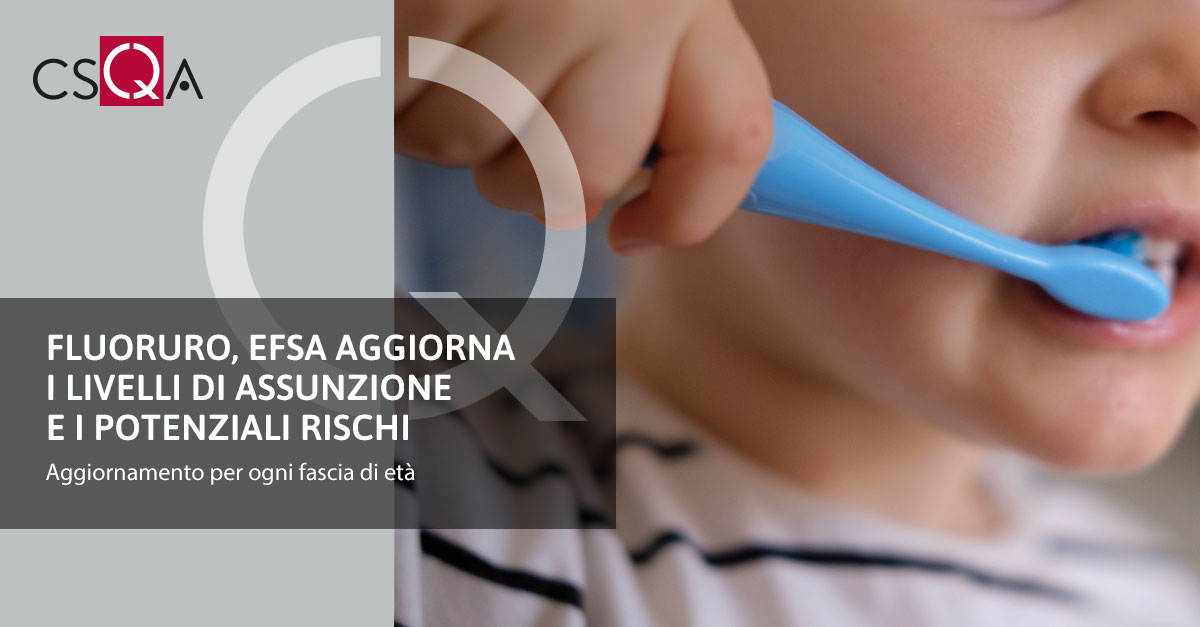 The European Food Safety Authority ( EFSA ) has updated, with a scientific opinion , the relative safe or tolerable intake levels and the potential risks for consumers linked to exposure to fluoride , therefore to its presence in drinking water, food, fluoridated table salt and fluoridated dental hygiene products if ingested.
The European Food Safety Authority ( EFSA ) has updated, with a scientific opinion , the relative safe or tolerable intake levels and the potential risks for consumers linked to exposure to fluoride , therefore to its presence in drinking water, food, fluoridated table salt and fluoridated dental hygiene products if ingested.Fluoride is a naturally occurring element that can inhibit tooth decay. In the European Union (EU), fluoridation of public drinking water is practiced only in a very few member states, but approximately 90% of toothpastes sold contain fluoride.
Correct (i.e. only superficial) use of fluoridated oral hygiene products does not promote fluoride exposure, therefore only their ingestion was evaluated.
No significant health risk
The Chair of EFSA’s Scientific Committee, Susanne Hougaard Bennekou , said: “We have estimated that, overall, at current fluoride concentrations in drinking water in Europe, total fluoride exposure does not exceed the new safe and tolerable maximum intake levels for almost all age groups and therefore does not pose a health risk.There is, however, an exception for children between the ages of 4 and 8. If we consider normal fluoride concentrations in drinking water and assume that they ingest all the toothpaste they use, a slight discoloration of the teeth, known as fluorosis, could occur. This phenomenon could particularly affect the molars, which are still developing in this age group.
But it shouldn't be a problem if children spit out the toothpaste properly after brushing their teeth."
Assessment of ingested fluoride from all sources
The European Commission has asked EFSA to update its previous consumer risk assessment of fluoride after recent studies indicated a possible link with harmful effects on the developing nervous system in children.EFSA experts also examined the potential effects of fluoride on the thyroid, bones and teeth.
Thorhallur Halldorsson, Vice-Chair of the Scientific Committee and Chair of the Fluoride Working Group, said: “After reviewing more than 20,000 scientific publications up to 2024, we have thoroughly examined the most relevant human and animal studies to complete our risk assessment.”
Safe intake levels for individuals aged 9 years and older
EFSA experts have established a safe intake level of 3.3 mg/day for pregnant women and for all people over 8 years of age."This value," explained Professor Halldorsson , "was determined due to potential effects on the developing central nervous system of the fetus. Such effects occur at concentrations in drinking water above 1.5 milligrams per liter (mg/l), which is the legal limit in the EU. However, concentrations found in drinking water in European countries are generally less than 0.3 mg/l.
At fluoride concentrations below 1.5 mg/L, evidence of a possible link is inconsistent and insufficient to draw clear conclusions. The safe intake level also prevents other possible adverse effects on bones and the thyroid.
Dental fluorosis in young children
For children aged 0 to 8 years, EFSA experts identified dental fluorosis as the most concerning effect. The threshold for dental fluorosis is slightly lower than that for other effects, including potential effects on the central nervous system, bones, and thyroid.The opinion establishes the following tolerable upper intake levels for infants and young children:
- 1 milligram per day (mg/day) for infants 0 to 12 months;
- 1.6 mg/day for children 1 to 3 years
- 2 mg/day for children 4 to 8 years.
Safe level and tolerable upper intake level
Professor Halldorsson clarified: "A tolerable upper limit is a threshold below which no harmful effects are expected. A safe intake level is used when there is greater uncertainty about the limit value; it is the maximum amount believed to pose no risk of adverse effects in the population."There is evidence that we cannot ignore the link between fluoride and possible effects on the developing nervous system of the fetus. However, the evidence is insufficient to establish a precise threshold.
"Our opinion also recommends further research in the future to fill these data gaps ." (Source: https://www.efsa.europa.eu/ )